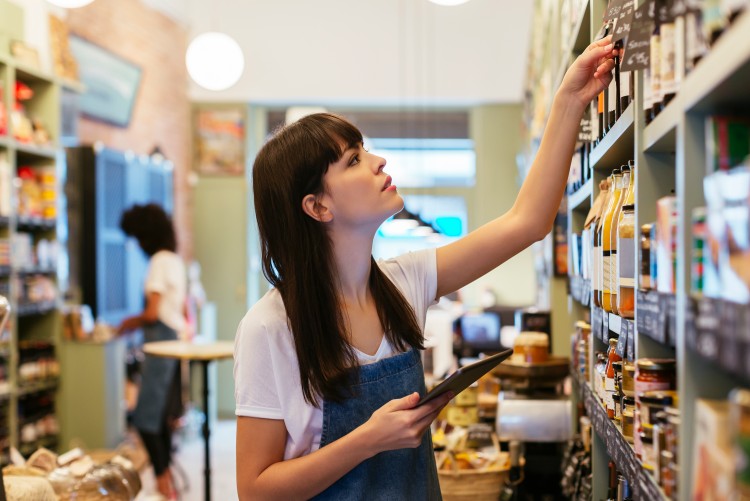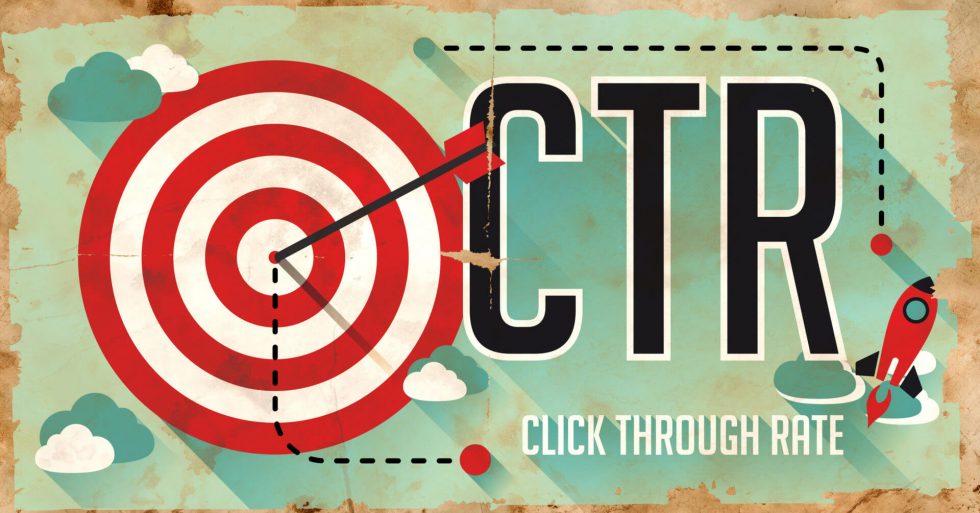If you’re hoping to get more traction for your ecommerce brand, drive more traffic and convert that traffic into buying customers, then it’s important to know the latest trends shaping the industry.
The march toward ecommerce, away from Bricks and Mortar, will be a perpetual
Businesses that didn’t even have a website before last year have suddenly come online. However, while consumer behaviour continues to favour convenience, there is an inevitability about being able to reach into your pocket to be able to buy anything, anywhere, at any time.
Some new ecommerce businesses lack the backend infrastructure to cope with an increase in traffic and the requirements of shipping currently being placed on them. They will need to learn fast to survive.
On the other hand, companies such as Amazon and Walmart have the experience and infrastructure required to satisfy today’s customers. Other niche marketplaces such as Etsy continue to grow to anticipated e-commerce trends to accommodate new digital entrepreneurs.
Nick Hayes of RANDYS Worldwide explains,
“As shoppers realize the ease of shopping in a marketplace is easier and more convenient than shopping on multiple ecommerce stores – with the mental satisfaction of 2-3 day shipping and free returns on most items and most marketplaces, consumers will expect the same from all other ecommerce sites.
The bar has been set. Big ecommerce companies offer the best of both worlds: they provide value to consumers, low barrier to entry for brands to sell online, and user-generated content that perpetuates both product and content relevance as well as search rank.”
How to take advantage of ecommerce trends
Think of it as another channel and diversify your brand by listing products on marketplaces.
While it’s important to grow your digital presence through a website or ecommerce store, the most critical thing is your customer’s convenience.
If you’re just starting out or have a brand with low exposure, become a seller on your industry’s top marketplaces. This way, you can take advantage of the high traffic reach, quick shipping and overall experience of these larger companies.
However, be careful not to only rely on these marketplaces. You don’t own the customer data when you sell your products on sites like Amazon which can be a limit for your brand growth. The solution is to drive visitors to your site by offering them limited-edition products that create urgency and scarcity.
Online buying will not be limited to B2C products
Suddenly food, fashion and gadgets weren’t the only things people could purchase online and have delivered to their doors. Groceries, furniture and even vehicle parts have joined the list.
These changes to buying habits might slow down slightly as people can return to their regular routines, but they certainly won’t stop.
The shift of ecommerce from something people have become dependent on rather than a simple convenience will mean that brands need to adapt their strategies accordingly.
How to take advantage
Whether you’re a manufacturer, B2B or something else, start selling D2C or D2B.
The products you’re selling can now be bought online. You simply need to make it easier for your customers to buy from you.
You can start by creating an online catalogue which contains all of your products. Next, build a user-friendly buying experience by augmenting that catalogue with relevant content.
Self-service platforms will continue to rise in popularity
Getting started online was once a long and painstaking process. But recessions and pandemics changed the narrative and showed us how quickly small businesses and solopreneurs can digitally pivot their businesses.
“The trend will favour platforms that deploy & sell quickly online, without the need for a small army of developers & consultants,”
… says Chris Byrne, CEO of Sensorpro.
How to take advantage
Rather than going the expensive route the first time around with your ecommerce store, search for platforms that can help you get up to speed quickly.
If your brand is already established, consider creating templated content that can help your audience get up to speed quickly with using your products or solving a common problem within your industry.
Shoppable video ads on social media
Social media consumption won’t slow down, and brands will begin to advertise in different ways on channels such as TikTok and Instagram.
According to Digital Growth Initiator Eduard Klein,
“Zoomers spend hours scrolling TikTok and Instagram feeds. Merchants are in seventh heaven; video is the perfect channel for reaching the curious young target audience. Gen-Z can make buying decisions literally from their social media feed, and videos let them shop straight away.”
Brands have already started to get a lot of value from placing ads in stories on apps like Instagram and Snapchat, so this is just the next step in the evolution of social media selling.
How to take advantage
Video provides another dimension when it comes to marketing your products. If you’re a D2C brand, then record videos of your top-performing products and place them on the social media platforms where your audience can be found the most.
Your videos can vary from unboxing videos to tutorials or explainer videos. Product images can even be converted into a slideshow and user-generated content can be reposted to capitalise on the video frenzy.
Omnichannel selling will be the norm
Lauren Davis of Just After Midnight put it this way:
“Omnichannel selling will become the new normal. We’re seeing this with the public cloud platforms moving into this space with tools like Amazon Personalise and Pinpoint. This could potentially be disruptive in an interesting way, but the bottom line is omnichannel selling, and those kinds of capabilities will be cheaper and more accessible. This will be the year this moves from something some are doing to something most are doing.”
Most businesses are already aware that customers want to view content in multiple ways. Tablets, mobile phones and desktops are just the beginning. And like we’ve mentioned in other trends, brands are discovering new ways to sell their products through social media.
Amazon Pinpoint and Amazon Personalise are two products from Amazon Web Services (AWS) that enable brands to improve the customer experience and communicate with customers across multiple channels.
How to take advantage
Start by doing a deep dive into your customers and understand the things that matter the most to them and the channels they frequently visit.
Today’s customers are seeking a cohesive buying experience across multiple channels. To facilitate this, brands need to use headless ecommerce architecture that delivers content and products to any screen or device with the help of APIs.
It can be enticing to want to be everywhere, but you should start by focusing on the channels where your customers go the most and sell to them there.
Analytics will flourish
In the world of ecommerce, customer data will continue to gain value. Many brands focus on the basic, but vital metrics provided to them, such as click-through-rate on specific campaigns and conversion metrics that indicate where the bulk of traffic and sales are coming from.
However, as we move forward, many will uncover data capabilities and get even more granular.
Vanhishikha Bhargava of Contensify explains,
“Segmentation is going to go beyond just one-time sales and loyal customers. It’s going to be a lot about how they interact with your ecommerce business. Knowing who your price-sensitive customers are. Knowing which one of your customers would rather buy full-price and who is more likely to abandon carts, and so on.”
How to take advantage
See what data you currently have available about your customers and your ecommerce stores. Are you able to gather enough insights from it? If not, see if you can upgrade to another tier that enables you to drill down into the data.
If you can’t, see what other analytics platforms can help you as better data can yield better results, such as:
- Segment your audience by geographical location, age and gender, buying habits, total spending, and more.
- Determine which channels led your customers to your store.
- Understand which content leads to the most conversions.
- Generate ready-made reports.
- Integrate with your CRM, CMS and more to gain a 360-degree view of your ecommerce business.
As Bhargava points out, “This will take the ability to personalize campaigns to a new level. You can apply the same to products. Knowing what’s trending, what’s not, and what’s refunded or returned the most, is a great way to timely pick up on changes in consumer needs. Getting to save up on inventory holding costs, will give ecommerce businesses more mileage and resources for marketing and growing their business.”
Influencers will become brand partners
Most ecommerce brands have tapped into influencers over the years to leverage their vast audiences.
Why is influencer marketing such a major boon for ecommerce brands? Jordie Black of ZINE breaks it down for us,
“Many ecommerce brands have a content problem – in that they are unable to create enough content at scale to support their marketing efforts. A trend we will see is brands looking to influencers as content creators to support the content creation process instead of a content agency. We’ll also see brands add paid media spend to this content so that they can control the reach and audience.”
How to take advantage:
Reach out to influencers in your niche and get them to help create content for your business:
Make a list of local or micro-influencers that share your brand value.
Build a relationship with them by helping them to grow their audience first and/or providing free merchandise.
Give them the freedom to create the way they want to create.
Pro tip: Take advantage of NEW features on social media platforms since the algorithm rewards the adoption of these new features. For example, Reels on Instagram get more organic reach than regular posts or stories.
So, every time there’s a new feature, get on the bandwagon and experiment. Influencer content doesn’t need to be limited to ads for B2C companies either as the goal should be about providing value for your customers. For example, the Dell Luminaries podcast explores IT transformation and business growth through discussions with tech experts.
AI will get less artificial and more beneficial. In previous years many of the benefits of artificial intelligence were a bit early to be realised in ecommerce, but that will change dramatically this year. As concepts such as machine learning and chatbots become more mainstream, brands can leverage AI to yield real business impact. For example, AI can already be used to make recommendations for what customers should purchase next based on their history.
Brands can also leverage concepts such as voice search to position their products in front of customers. AI will also be able to assist on the backend and help in making inventory predictions.
How to take advantage
Buy into AI ASAP and don’t see it as something for the future.
Start by using AI tools that can help you streamline your marketing, improve the customer experience or perform critical tasks for your business much faster. For example, hyper-personalisation software identifies imminent product selections for each consumer and sends an email with that selection autonomously. With zero staff overhead it is independently verified to deliver one of the highest ROIs in ecommerce marketing.
The time for AI is now, and many brands are always using it to their advantage. Dylan Max of Netomi points out that:“Retailers are turning to artificial intelligence to improve everything from operations and inventory management to create good customer service and loyal customers.”There are many tasks which ecommerce brands might have hired a virtual assistant to cover that AI can help you tackle, allowing you to put your human resources in more creative roles.
Personalisation will go beyond purchasing to making a bond customers much prefer when their experience is tailored to their unique needs. Smarter HQ has learned that 72% of customers only engage with personalised messaging.
While personalisation was initially limited to email marketing, customer expectations and technology capabilities have changed what is possible.
Personalisation aims to create a long-lasting customer relationship by recording information about your customers (with their consent) and using it to remember things like the last time they made a purchase, and the types of items they usually buy, and then providing recommendations for the next steps. For example, Enfamil requests the due date of babies from pregnant mothers when prompting them to sign up for an email list.
This allows them to provide relevant information throughout the pregnancy and as the baby develops. Brands should also use information stored in their database to create a personalised customer service experience, no matter where a customer chooses to interact, whether via email, phone or another channel.
Green consumerism will grow in popularitySustainability is no longer reserved for a few brands. Changes in the economic, cultural and social landscape in many countries worldwide have shifted the focus towards making products that protect the environment.
Brands such as Amazon have taken the pledge towards sustainability, and other ecommerce brands are likely to follow suit as humans look for ways to reduce waste and preserve the earth for future generations.
Green consumers are also flexing their purchasing power, with 65% of buyers wanting to make purchases from brands that aim for sustainability according to the Harvard Business Review. How to take advantageAnalyze your current products to determine if they are being made through sustainable processes or with sustainable materials.
If they aren’t, consider making changes to adopt a more sustainable process by reducing the amount of packaging waste or outlining ways for your customers to recycle your products when they’re finished with them.
Align your brand with a charitable organization that gives back to the environment. Just like choosing an influencer, your brands can benefit from working with each other, provided that you’re ethically aligned.
For the ecommerce space at least, opportunities were there to be seized, and with these trends gaining traction already, this could be a year that’s just as memorable.





